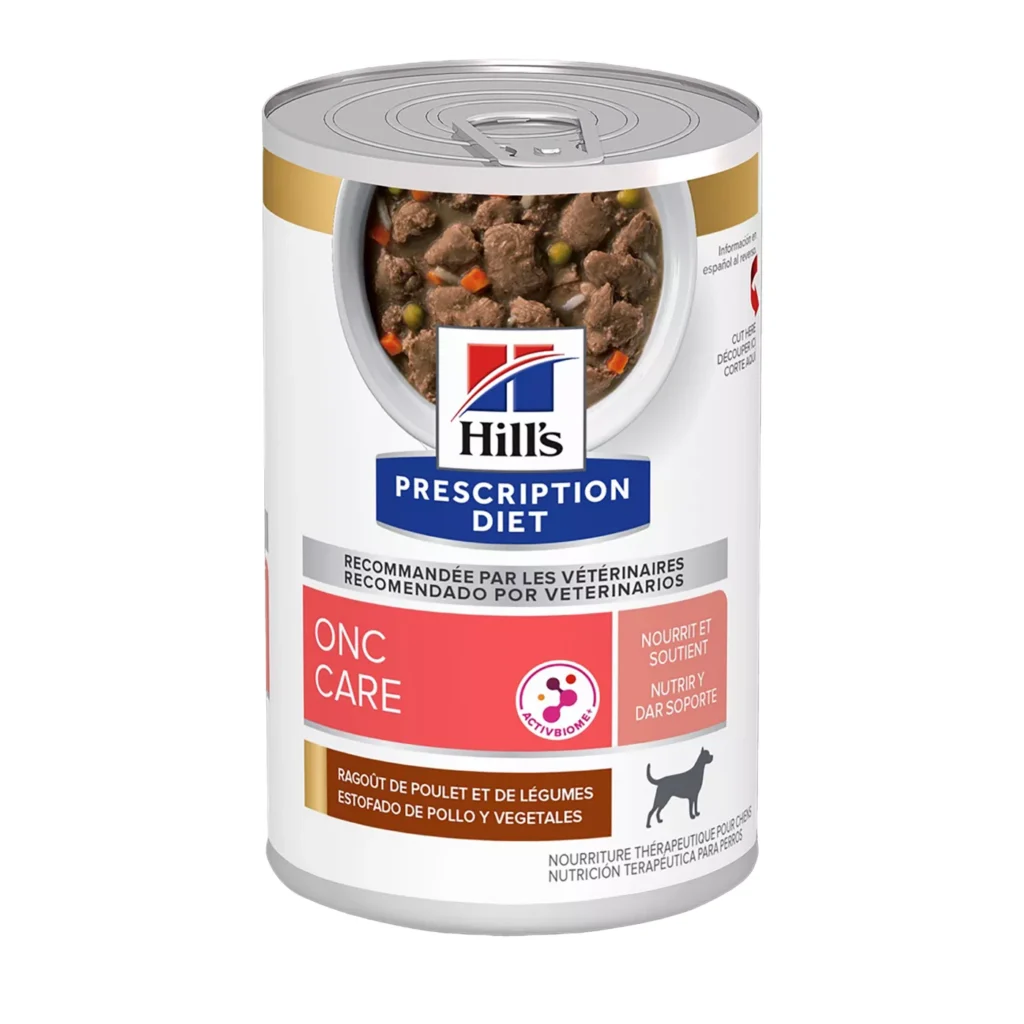Prescription dog food is expensive due to its specialized formulations. These diets target specific health issues, requiring high-quality ingredients and extensive research.
Prescription dog food plays a crucial role in managing various health conditions in pets. Unlike regular dog food, these diets are scientifically formulated to meet specific nutritional needs. They often contain unique ingredients that support health issues such as allergies, kidney disease, or obesity.
Producing these specialized foods involves rigorous testing and veterinary oversight, increasing costs. Pet owners may find the price challenging, but investing in prescription food can significantly improve their dog's quality of life. Understanding the reasons behind the cost can help owners make informed decisions for their furry friends’ health and well-being.
The Premium Behind Prescription Dog Food
Prescription dog food often comes with a hefty price tag. This food is specifically designed to meet the needs of pets with health issues. Understanding the reasons for the cost can help pet owners make informed choices.
Specialized Ingredients
Prescription dog food includes special ingredients. These ingredients are selected for their health benefits. They often cost more than standard dog food ingredients. Here are some key points:
- High-quality protein sources: These support muscle health.
- Unique carbohydrates: They aid digestion and energy.
- Essential fatty acids: These promote a healthy coat and skin.
Many prescription diets focus on specific health issues. Some target kidney health, while others may address allergies. This tailored approach justifies the higher price.
Research And Development
Creating prescription dog food involves extensive research. Companies invest in studies to ensure effectiveness. This research adds to the overall cost. Key elements include:
- Clinical trials to test ingredient effectiveness.
- Collaboration with veterinarians and nutritionists.
- Continuous improvement based on new findings.
These efforts ensure that the food meets veterinary standards. This commitment to quality leads to a higher price tag.

Comparing Standard And Therapeutic Diets
Understanding the differences between standard and therapeutic dog diets is crucial. These diets serve different needs. Standard diets focus on general nutrition. Therapeutic diets target specific health issues. This distinction plays a significant role in cost.
Nutritional Differences
Standard dog foods provide basic nutrition. They contain essential vitamins and minerals. Common ingredients include:
- Meat
- Grains
- Vegetables
These ingredients meet daily requirements for most dogs. Therapeutic diets, on the other hand, contain specialized nutrients. They often include:
- Higher protein levels
- Controlled fat content
- Unique carbohydrates
These tailored ingredients help manage health conditions. They may address:
- Kidney disease
- Food allergies
- Obesity
Regulatory Standards
Therapeutic dog foods face stricter regulations. They must meet specific health claims. This involves rigorous testing. The FDA and AAFCO oversee these standards.
Standard dog foods have fewer requirements. They must still meet basic nutritional guidelines. Here's a comparison of the regulatory aspects:
| Criteria | Standard Diets | Therapeutic Diets |
|---|---|---|
| Health Claims | General | Specific |
| Testing | Basic | Extensive |
| Approval | Less strict | Highly regulated |
The higher costs of therapeutic diets reflect these factors. More research, testing, and specialized ingredients drive prices up.
The Role Of Veterinarians In Pet Nutrition
Veterinarians play a crucial role in your pet's nutrition. They provide expert guidance on what to feed your dog. Their recommendations can ensure your dog stays healthy. Understanding their role helps explain the cost of prescription dog food.
Expert Formulation
Prescription dog food is specially formulated by experts. These formulas address specific health needs. Here’s what makes them unique:
- Research-Driven: Each recipe is based on scientific studies.
- Quality Ingredients: They use high-quality, digestible ingredients.
- Tailored Nutrition: Formulas cater to specific health issues.
Veterinarians collaborate with pet food companies. They ensure that the food meets nutritional standards. This expert formulation contributes to higher costs.
Dietary Recommendations
Veterinarians assess your dog's health before recommending food. They look at various factors:
| Factor | Description |
|---|---|
| Age | Young and old dogs need different nutrients. |
| Breed | Different breeds have unique health needs. |
| Weight | Overweight dogs require special diets. |
| Health Conditions | Conditions like diabetes need specific foods. |
These tailored dietary recommendations ensure better health. Prescription dog food is often the best choice for specific issues. This specialized care adds to the overall cost.
Cost Analysis: Breaking Down The Price Tag
Understanding the price of prescription dog food requires a closer look at costs. Many factors contribute to its higher price compared to regular dog food. Let's break down these costs to see why prescription options are more expensive.
Production Expenses
Production expenses play a significant role in the final price of prescription dog food. Here are some key factors that contribute:
- High-Quality Ingredients: Prescription diets often contain premium ingredients. These ingredients are more expensive than standard options.
- Special Formulations: Each recipe is tailored for specific health conditions. This requires extensive research and development.
- Quality Control: Manufacturers invest in rigorous testing. This ensures safety and efficacy for pets.
These factors increase the overall production costs. Higher production costs lead to higher retail prices.
Marketing And Distribution
Marketing and distribution also add to the price of prescription dog food. Consider the following:
- Targeted Marketing: Companies focus on pet owners seeking health solutions. This specialized marketing can be costly.
- Limited Distribution: Prescription foods are often available only through veterinarians. This limits access and raises prices.
- Brand Reputation: Established brands invest in their reputation. This can lead to higher prices due to brand loyalty.
These marketing strategies and distribution methods contribute to the higher cost. Prescription dog food requires a unique approach to reach its audience.
The Science Of Tailored Nutrition
Prescription dog food focuses on the unique health needs of pets. This specialized nutrition promotes overall wellness. It helps manage specific health issues. The tailored formulas are not just random mixes. They are based on scientific research and veterinary knowledge.
Targeted Health Benefits
Prescription dog food offers many targeted health benefits. Each formula addresses specific medical conditions. Here are some common conditions and their benefits:
- Weight Management: Helps dogs lose weight safely.
- Skin Health: Reduces allergies and improves coat quality.
- Digestive Support: Aids in digestion and prevents upset stomachs.
- Joint Health: Supports joint function and mobility.
Veterinarians recommend these foods based on each dog's needs. The right food can lead to better health outcomes.
Clinical Trials And Testing
Prescription dog food undergoes extensive clinical trials. These trials ensure the food is safe and effective. Here’s how testing is conducted:
- Formulations are created based on scientific research.
- Feeding trials are performed with dogs.
- Results are analyzed for health benefits.
- Adjustments are made based on findings.
This rigorous process increases costs. Quality control ensures that each batch meets high standards. This dedication to science explains the price tag.
| Health Condition | Common Ingredients | Expected Benefits |
|---|---|---|
| Obesity | High fiber, low fat | Weight loss, better energy |
| Allergies | Novel proteins, omega fatty acids | Reduced itching, improved skin |
| Digestive Issues | Probiotics, easily digestible carbs | Improved digestion, less gas |
| Joint Problems | Glucosamine, chondroitin | Better mobility, less pain |
Understanding the science behind tailored nutrition shows its value. Prescription dog food is more than a meal. It’s a step toward better health.
Quality Control And Manufacturing Standards
Prescription dog food is pricey due to strict quality control and manufacturing standards. These standards ensure safety and nutritional value. High-quality ingredients and processes lead to a higher price tag.
Safety Protocols
Safety is a top priority in dog food production. Companies follow rigorous safety protocols to protect pets. Here are key safety measures:
- Regular inspections of manufacturing facilities
- Testing ingredients for contaminants
- Monitoring production processes
- Conducting quality checks on finished products
These protocols help prevent issues like contamination or spoilage. Pet owners can trust that their dog's food is safe and healthy.
Ingredient Sourcing
Ingredient sourcing plays a big role in the cost of prescription dog food. Companies prioritize high-quality ingredients, which are often more expensive. Here’s why:
| Ingredient Type | Quality Level | Cost Factor |
|---|---|---|
| Meat | Human-grade | High |
| Grains | Organic | Medium |
| Additives | Natural | High |
Quality ingredients provide better nutrition. They also promote overall health for dogs. This commitment to quality increases production costs.
Consumer Perspectives And Value Perception
Understanding why prescription dog food is costly requires looking at consumer perspectives. Pet owners often weigh the benefits against the price. Many believe that paying more ensures better health for their furry friends.
Cost Vs. Benefit Analysis
Pet owners perform a cost vs. benefit analysis before buying prescription dog food. Key factors include:
- Quality ingredients: Better nutrition improves pet health.
- Health benefits: Prescription food addresses specific medical issues.
- Long-term savings: Healthy pets may need fewer vet visits.
Here's a simple table to illustrate:
| Factor | Cost | Benefit |
|---|---|---|
| Quality Ingredients | Higher | Improved health and energy |
| Health Benefits | Moderate | Fewer health problems |
| Long-term Savings | Lower | Reduced vet bills |
Take advice from Pet Expert Dr Marty
ESA Pet is an online service that helps you get a legitimate ESA letter
Pet vitamin supplements and grooming products
Owner Testimonials
Many pet owners share positive experiences. Here are some common themes:
- Improved health: Owners report better digestion and energy.
- Allergy relief: Prescription food helps with food allergies.
- Veterinary recommendations: Vets endorse specific brands.
Testimonials show a strong value perception. Owners feel the price is justified by the health benefits. Their pets thrive on specialized diets.
Many owners say, “My dog is happier and healthier.” This sentiment reflects a common belief. Investing in quality food pays off in the long run.

Navigating Insurance And Assistance Programs
Prescription dog food can be costly. Finding ways to manage these expenses is crucial. Various insurance plans and assistance programs can help alleviate the financial burden.
Insurance Coverage For Prescription Food
Many pet insurance companies offer coverage for prescription dog food. Here are some key points:
- Insurance policies vary widely.
- Check your plan for specific coverage details.
- Some plans cover 100% of the cost.
- Others may require a deductible or co-pay.
Commonly covered items include:
| Insurance Provider | Coverage Type | Notes |
|---|---|---|
| PetPlan | Partial Coverage | Requires deductible. |
| Healthy Paws | Full Coverage | No annual limit. |
| Embrace | Partial Coverage | Includes wellness plan. |
Support For Low-income Pet Owners
Many organizations offer support for low-income pet owners. Options include:
- Non-profit veterinary clinics.
- Food banks that provide pet food.
- Local animal shelters with assistance programs.
Check for local resources:
- Contact your veterinarian for recommendations.
- Visit local animal shelters for help.
- Search online for community assistance programs.
These resources can help reduce the costs of prescription dog food. Be proactive in seeking help.

Frequently Asked Questions On Why Prescription Dog Food Costs More
Why Is Prescription Dog Food More Costly Than Regular Food?
Prescription dog food tends to be more expensive due to its specialized ingredients. These foods often contain high-quality proteins and unique nutrients tailored for specific health issues. Additionally, the manufacturing process is more stringent, ensuring safety and efficacy. This all contributes to the overall higher price.
What Makes Prescription Dog Food Different?
Prescription dog food is specifically formulated to address health problems in dogs. It includes unique ingredients that cater to various conditions like allergies or kidney issues. These diets are often developed by veterinarians and nutritionists, ensuring they meet specific dietary needs.
This specialized focus sets them apart from regular dog food.
Are Prescription Dog Foods Worth The Price?
Yes, prescription dog foods can be worth the price for dogs with specific health needs. They often help manage chronic conditions and improve overall well-being. The benefits can outweigh the costs, especially when considering potential vet bills from untreated issues.
Always consult with your veterinarian for personalized advice.
Can I Buy Prescription Dog Food Without A Vet?
Typically, prescription dog food requires a veterinarian's approval. This is because these diets are designed for specific medical conditions. Purchasing without a vet's prescription may not provide the necessary guidance for your dog's health. It's best to consult your vet for a proper diagnosis and recommendation.
Shop Form Devoted Pet Foods UK
Conclusion
Prescription dog food often comes with a higher price tag due to its specialized ingredients and research-backed formulations. These products address specific health issues in pets, ensuring better overall well-being. While the cost may seem steep, investing in quality nutrition can lead to long-term health benefits for your furry friend.

















